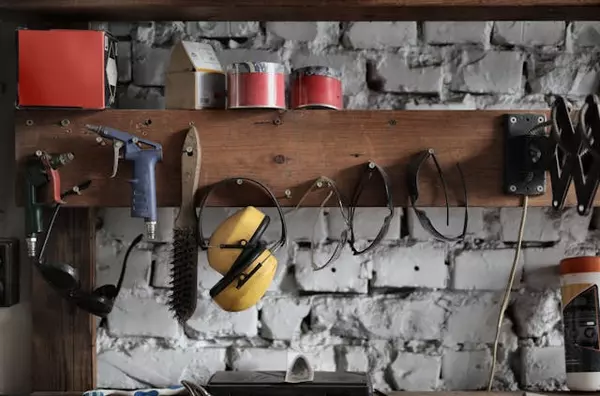Top Renovation Mistakes to Avoid When Moving into an Old Home

Moving into an old home can be an exciting journey filled with potential. However, it’s important to avoid common renovation mistakes that could make your dream project costly. In this blog post, we’ll explore the top renovation mistakes to avoid when moving into an old home, ensuring your home retains its character while accommodating your needs. As you plan your move, thinking ahead about the renovation processes and how to tackle them effectively is important. Let’s explore how you can preserve the charm of your new old home without falling into common traps.
Ensure a Hassle-Free Transition to Your New Home
Moving into an old home presents unique challenges, especially when the move covers long distances, such as relocating from Florida to Ohio. Hiring professional movers can significantly smooth this process. When you find interstate moving help, you gain access to experienced professionals who understand the intricacies of packing, handling, and transporting items that require special care, which is often the case with the delicate features of older homes.
In addition, the journey from Florida to Ohio can be streamlined with the right moving team, allowing you to focus more on the renovation aspects upon arrival rather than the logistics of the move itself. Movers can also provide valuable insights and assistance in setting up your new home in a way that protects its historical elements from damage during the unpacking and setting up process.

Renovation Mistakes to Avoid When Moving into an Old Home: Overlooking the Home’s Historical Integrity
After moving in, preserving the historical integrity of an old home is key when planning renovations. That means being mindful of maintaining original features such as woodwork, fireplaces, and windows that embody the character and era of the property. Replacing these unique elements with modern materials can disrupt the aesthetic and potentially decrease the home’s value. Instead, focus on restoring these features where possible. For instance, original wood can often be refurbished rather than replaced, and vintage windows can be fitted with energy-efficient glazing while keeping the historic frames. Taking these steps respects the home’s past while adapting it for present-day living, ensuring its historical charm remains intact and appreciated.
Underestimating Structural Requirements
Assessing the structural stability of an old home is a crucial step in designing your dream home. These historic properties often have hidden flaws like foundation cracks or rotten support beams, which might not be immediately visible. Before you embark on any renovation, it’s wise to hire a structural engineer to evaluate the integrity of the building. This professional can identify potential risks and guide you on repairs or reinforcements. Addressing these structural needs on time prevents future complications that could derail your renovation plans. This careful planning ensures that your dream home is beautiful but also safe and durable.
Ignoring Existing Plumbing and Electrical Systems
When moving into an old home, paying close attention to the existing plumbing and electrical systems is important. These systems may be outdated and not up to current safety standards, potentially leading to serious issues if left unchecked. Often, old wiring can be a fire hazard, while corroded pipes might cause leaks or water damage. To spot these problems, look for signs like frequent circuit breaker trips, flickering lights, discolored water, or reduced water pressure. Addressing these issues early on by consulting with professionals can prevent costly repairs later. They can assess the state of your home’s infrastructure and recommend necessary upgrades before they become major problems. This proactive approach keeps your home safe and functional.

Skipping Necessary Permits
Securing the necessary permits before starting renovations on an old home is crucial. This process ensures that all changes comply with local building codes and regulations, guaranteeing safety and standardization. Skipping this step can lead to serious consequences, including fines and having to redo work that doesn’t meet standards.
Therefore, contact your local building authority to understand what permits you need for your specific projects. These might include structural changes, electrical upgrades, or significant landscaping. Obtaining these permits might seem like a hassle, but they protect you from potential legal and financial headaches down the line. Also, having the proper permits can make your home easier to sell, as potential buyers will know the renovations were done correctly and legally.
Choosing Quick Fixes Over Quality Solutions
Choosing quality solutions over quick fixes is vital when renovating an old home. It may be tempting to cut corners or opt for the least expensive options to save time and money initially, but this approach often leads to higher costs and more work in the long run. For example, using cheap materials or quick-dry cement can lead to premature wear and tear, requiring more frequent repairs or replacements. Instead, invest in high-quality materials and skilled craftsmanship from the start. That ensures any renovations last longer and enhances the home’s value and functionality. Focusing on quality solutions sets a solid foundation for your home that will stand the test of time.
Failing to Plan for Hidden Costs
One of the important renovation mistakes to avoid when moving into an old home is not planning for hidden costs. Unexpected expenses often surface during undertakings, from mold removal to repairing unseen water damage or termite infestations. Setting aside a contingency fund, typically 10-20% of your total renovation budget, is wise to navigate these surprises effectively. This extra cushion allows you to handle unforeseen issues without derailing your project financially.
At the same time, conducting thorough inspections before purchasing or starting renovations can help identify potential problems early on. By anticipating these hidden costs and preparing financially, you ensure a smoother renovation process, keeping your project on track and within budget.

Overpersonalizing the Space
Overpersonalizing the space in an old home can be a misstep, especially if you might sell the property in the future. While making your house feel like a home is important, adding too many niche or highly specific design elements can limit its appeal to potential buyers. For example, turning a classic living room into a themed movie theater or installing elaborate, permanent fixtures that suit only a particular taste could deter others.
Instead, aim for a balance: personalize with removable decor or easily reversed updates. This approach lets you infuse your personality into the home without compromising marketability. By being thoughtful about customization, you create a space that feels personal yet remains attractive to a broad audience.
Secure Your Home’s Future by Avoiding Common Pitfalls
Paying attention to the renovation mistakes to avoid when moving into an old home can save money and preserve your property’s unique charm. By focusing on the right aspects—such as securing permits, choosing quality over quick fixes, and planning for hidden costs—you set yourself up for a successful renovation. Remember, the goal is to enhance and protect your home for years. Whether you’re just starting your journey or making decisions, remember these tips to navigate the renovation process smoothly and efficiently.
The post Top Renovation Mistakes to Avoid When Moving into an Old Home appeared first on KeyGroup - Nicole Ward, REAL Broker.
Categories
Recent Posts











"My job is to find and attract mastery-based agents to the office, protect the culture, and make sure everyone is happy! "
